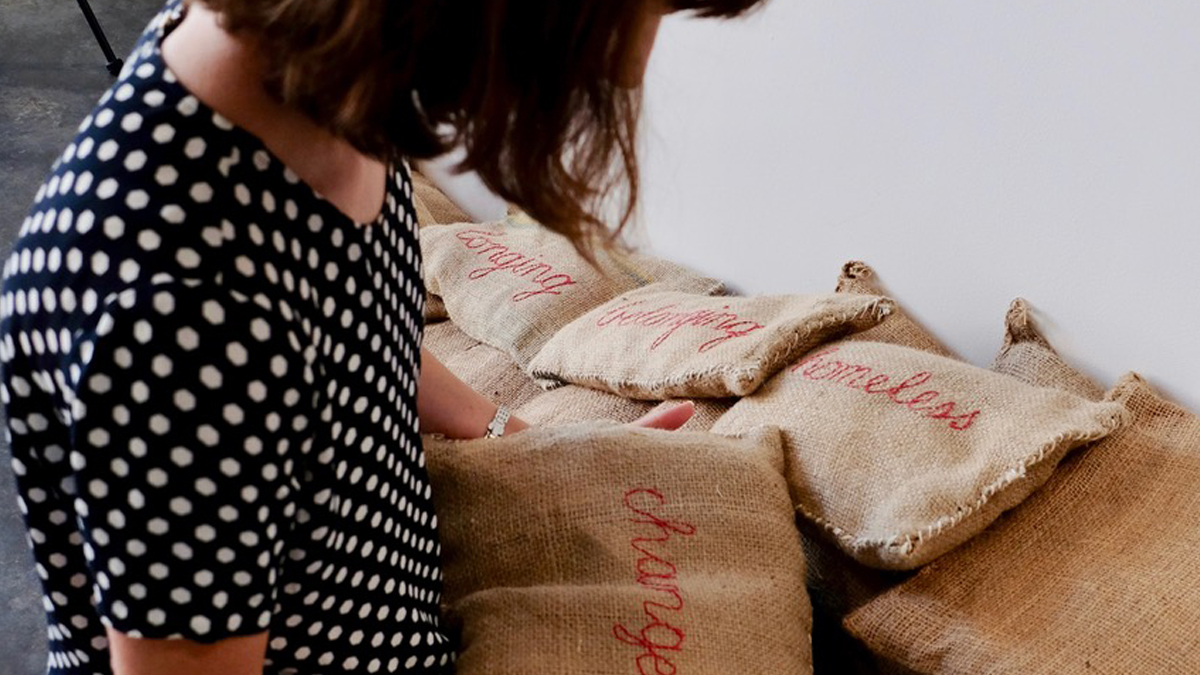
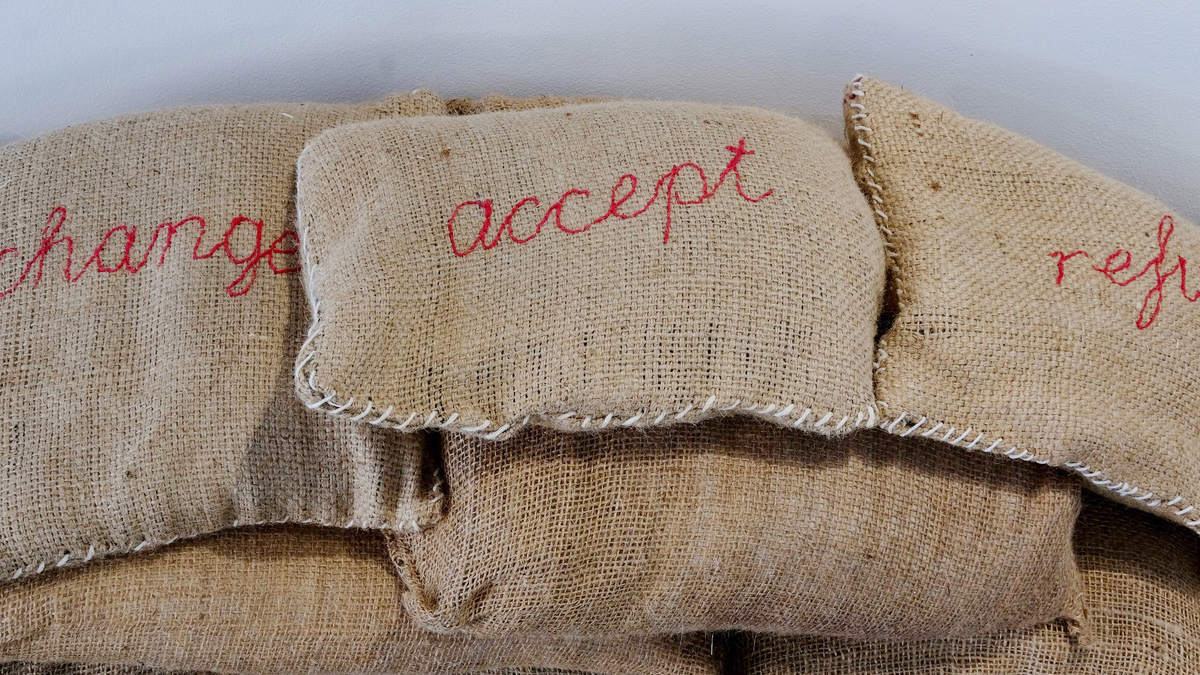
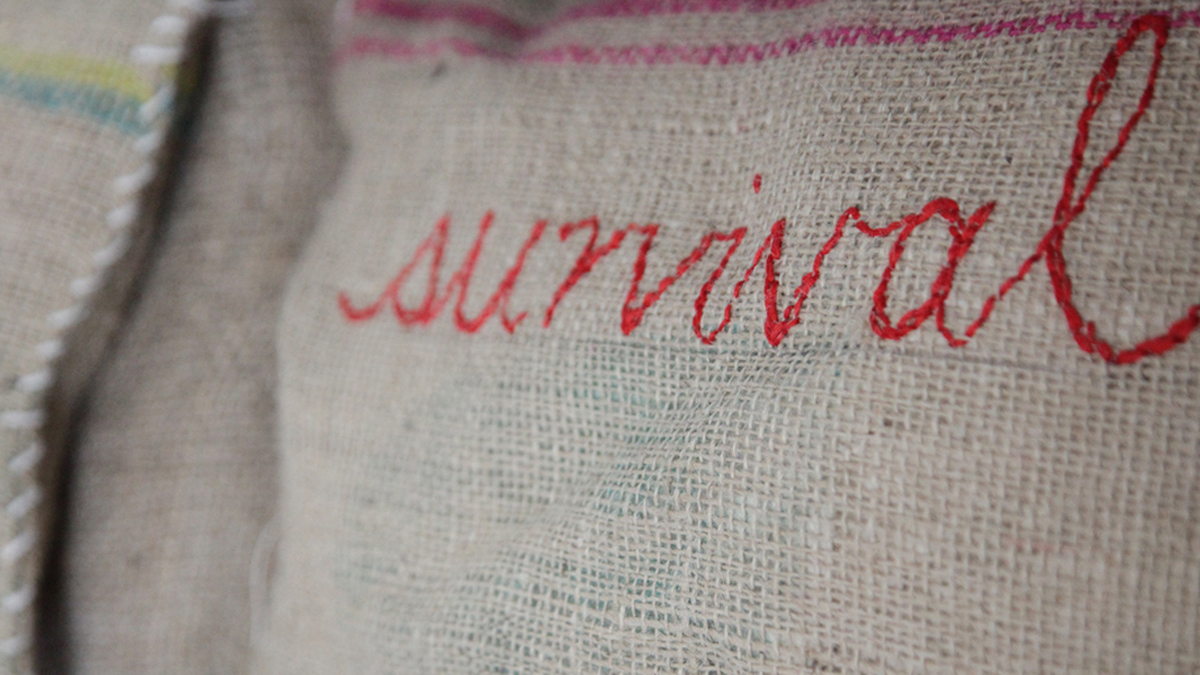
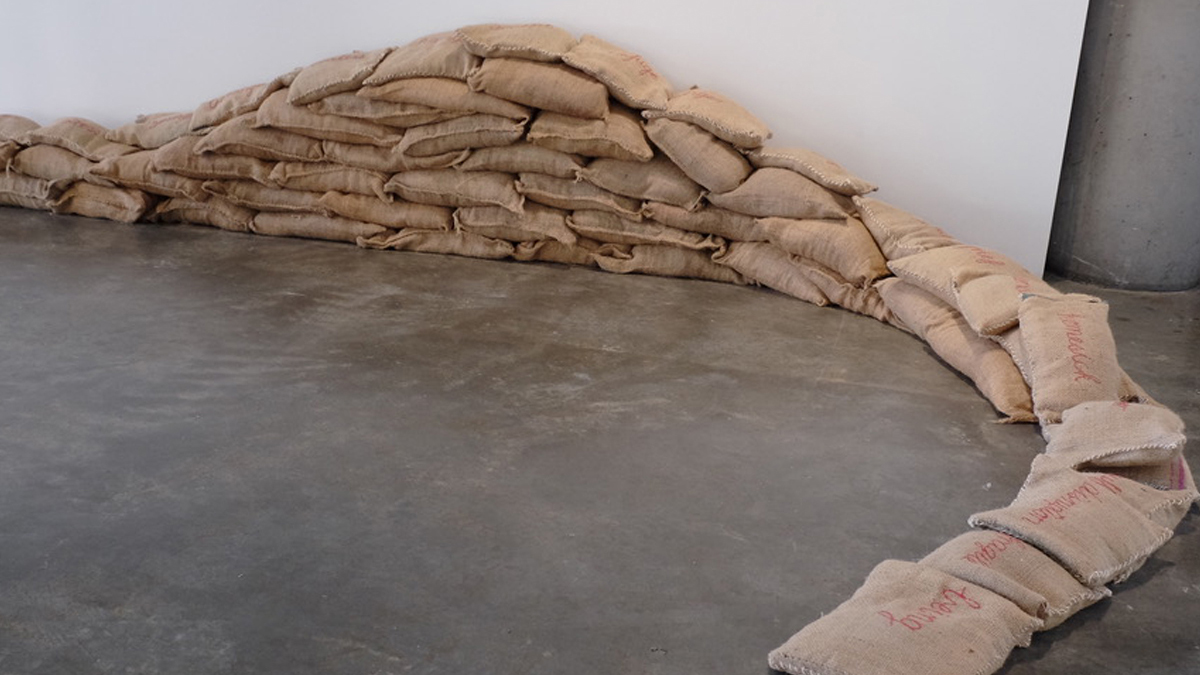
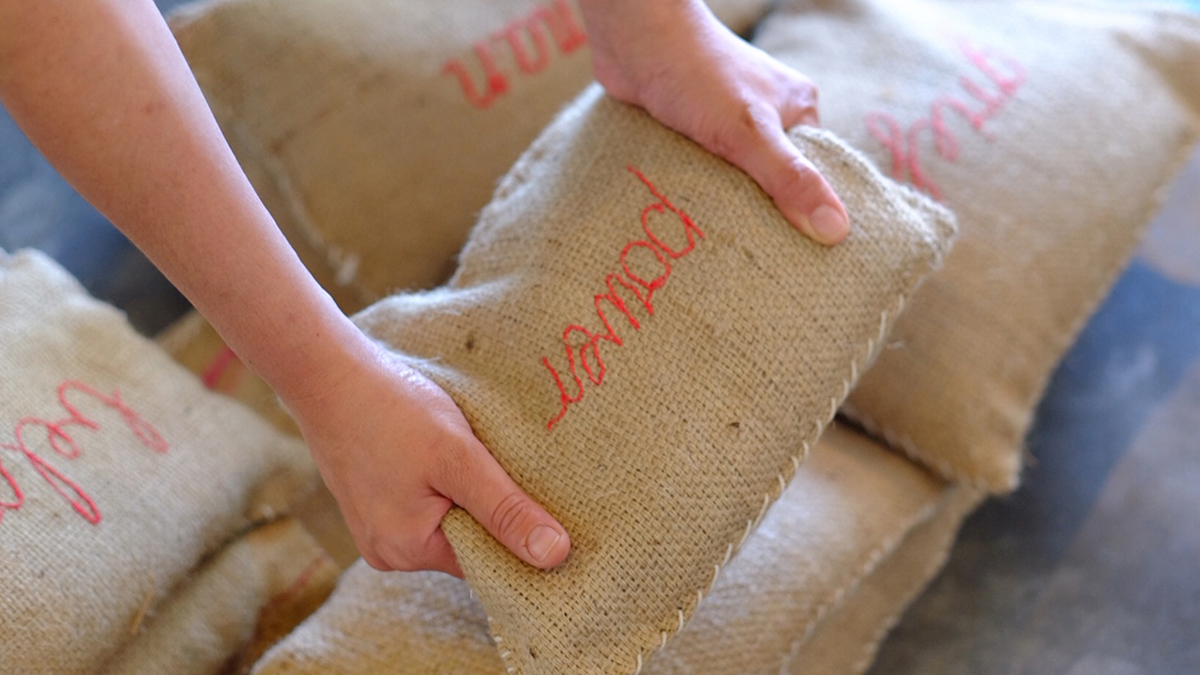


Survival Strategies 2018
Survival Strategies is an installation of hessian sandbags, which can be stacked, undulating along a wall or piled within a space. Many of the sandbags contain red text, which has been hand-sewn into the hessian bags. (There are approximately 50 sandbags, 20 contain the hand sewn text). The scale of each bag is smaller than a real functioning sandbag, resembling a small pillow. The artwork uses humble, biodegradable materials: recycled hessian, sand and mulch. The methods of slow stitching have been employed for the construction.
This artwork is participatory in the way it was created and is intended to be participatory in the way it is displayed. Viewers are invited to select a sandbag with a word, to contemplate the meaning and to move the sandbag within the installation. This can loosely be considered as a form of concrete poetry, the placement of the words can bring different meanings to the artwork.
Sandbags are objects that are intended to avert disaster; they carry with them the language of floods, catastrophic weather and warfare. For this artwork they are used as a metaphor to begin discussions around situations of migration, displacement and the support we bring to each other during challenging times. This artwork also draws on the context of climate change and rising sea levels, a situation that contributes to displacement.
Collaboration:
The conceptual development for the installation involved community engagement, working cross culturally to encourage collective creativity and a sharing of ideas and storytelling. In 2018 I conducted a series of creative workshops at Blacktown Arts Centre with about 20 participants: adult students who were studying English at MTC Blacktown. We began the workshop with a mindfulness meditation, followed by conversations around situations of migration, displacement, and belonging. The workshops informed the text which is sewn onto each sandbag.
My art practice investigates the social functions of art, interrogating the dialogues and emerging relationships which form between the artist / facilitator and participating immigrant communities in the context of art-making workshops.
The collaborative process questions established hierarchies of teaching and learning as the artist collaborates with people who do not identify as practicing artists, to develop a shared language of visual storytelling. The method of participatory art aims to encourage collective creativity, to bring migrant stories to a wider audience and to foster a sense of belonging.
Survival Strategies: Hessian, calico, red thread, sand, mulch.
Photography: Paula Broom